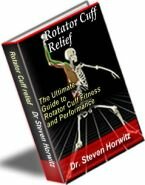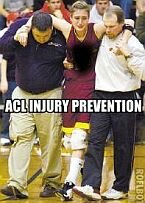Orthotics
Answering the following questions can help determine if you need orthotics?
- Do you have foot problems like bunions, corns, flat feet, hammer toes, painful feet, achilles tendonitis, shin splints, knee pain, hip pain, or back pain?
- Have you had any prior injuries (sprains, fractures) or surgeries to your feet?
- Do you stand or walk on a hard surface more than 4-6 hours per day?
- Do your shoes wear unevenly?
- Do you walk in a "toe-out" manner?
- Do you have bowed legs or knock knees?
- Do you have one leg shorter than the other?
- Do you run and/or play sports regularly?
Wear Patterns
- Take a look at the heels of a pair of shoes. Is the wear pattern even? Is one heel more worn than the other?
- Take a look at the forefoot portion of the sole of the shoe. Is the wear pattern even? Is the upper portion of the forefoot worn more on either the big toe side or the little toe side?
- Is the toe box excessively worn out or worn unevenly?
- Is the heel area excessively worn out or worn unevenly?
Observe your shoes for uneven wear patterns, which may indicate improper gait or other biomechanical problems. Is the wear pattern even between shoes? Major causes of asymmetrical wear are limb-length discrepancies and excessive pronation. The wrong shoe type can cause abnormal wear patterns. Look at different types of shoes you wear. If the abnormal wear pattern is consistent, then it is usually a biomechanical flaw. If only one style of shoes has abnormal wear, then look at the shoe with the abnormal wear for differences from all the other shoes. For running shoes, does the wear match the mileage? If the mileage appears to be low and the wear great, look for problems in the shoe.
If the upper looks like it is hanging over the outside of the shoe, it may indicate that the last (shape) of the shoe is too curved for the shape of the foot. If the upper looks like it is hanging over the inside of the shoe, it may be that the foot pronates too much or the foot may be too curved for the shoe. Abnormal wear through at the toe box means the shoe is sized too small. If the heel counter is tipped to the inside it usually means pronation. If there is excessive wear on the inside of the heel counter, it is frequently due to excessive heel motion within the counter indicating that the counter is too big for the heel.
See Footwear: Shoe wear patterns offer clues to injury and prevention.
Custom Fitted Orthotics v. Shoe Inserts
The term "orthotic" can refer to almost any device which is worn inside a shoe. Shoe Inserts can be inserted into a patient's shoe easily and can provide support to the foot. These range from rubber or silicone heel cups to full-length shock absorbing inserts. Some have good arch support, while others are completely flat. Some even contain magnets or fluid-filled sacs. These inserts are usually inexpensive, but but do not last longer than 1 year. The can be difficult to fit the non-standard size or asymmetrical foot and do not do a very good job of correcting specific problems.
Custom orthotics are casted for each foot. A wide range of materials are available and can be chosen based on need. Specific corrections can be made for the individual's problem. These orthotics can last several years.
Evaluating Your Present Orthotics
If you currently wear orthotics, be sure that your devices fit the criteria below:
- Your orthotics should be comfortable and add little extra weight to your shoes.
- Your orthotics should relieve the symptoms which they were meant to relieve.
- You should want to wear your orthotics (Orthotics tend not to work very well when sitting in your gym bag).
- Your orthotics should fit easily into your shoes. This assumes that you are wearing the proper shoes for your feet.
If your orthotics do not fit the above criteria, follow-up with the practitioner who made them or consult a practitioner who has expertise in biomechanics and orthotics.
Common errors
- First, you must wear a good shoe with orthotics! As I have told many patients, you cannot put a Porsche engine in a Hyundai and expect it to run like a Porsche!
- Pull out the insert that comes with the shoe and then put in the orthotic.
- You must wear the orthotic in all your shoes.
Sports and Orthotics
Orthotics can make a significant difference for any athlete who needs them. They will control pronation, support the arches of the foot and prevent excessive ankle and heel movement. They will also help improve gait, knee alignment and function and overall balance.
- Runners and joggers wear orthotics to absorb shock at heel contact, provide control and set up the forefoot for pushoff.
- Sprinters wear orthotics to control the movement of the forefoot.
- Cyclists have a limited need for orthotics and wear them primarily to control the internal and external rotation of the lower leg.
- Skiers wear orthotics to stabilize their foot in neutral and inhibit motion within the ski boot.
- Tennis players wear orthotics to provide lateral support, to decrease shear factors, to absorb shock (especially in the forefoot) and to allow subtalar motion.
- Basketball players wear orthotics to control the forefoot during jumping, to control the rearfoot during running and to control excessive inversion (protect against ankle sprains).
See my article Proper Shoe Fit for more information.
|
The Ultimate Nutritional Lie Detector Test LEARN MORE 
|
Kettlebell Rehab

Click Here
To See How Kettlebells will transform your body!
Vortex Rehab

Click Here
To See How This
Revolutionary Machine
Can Help You!
Partner / Support

Loans up to 3 months - fast cash advances for up to 90 days and up to $5,000!


















